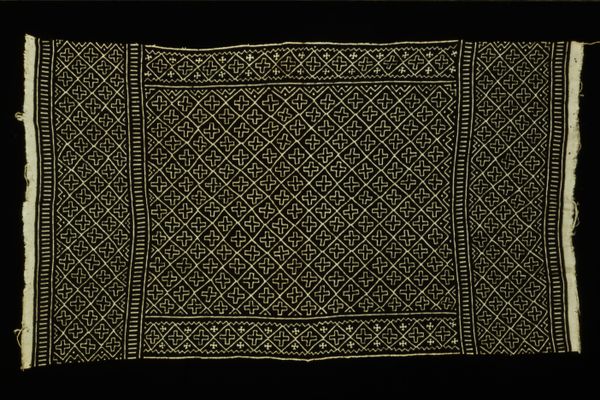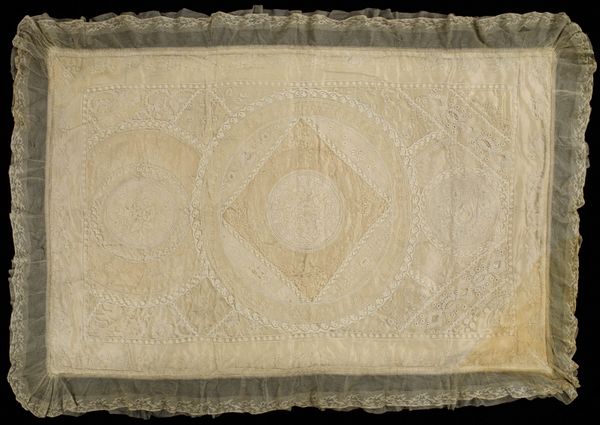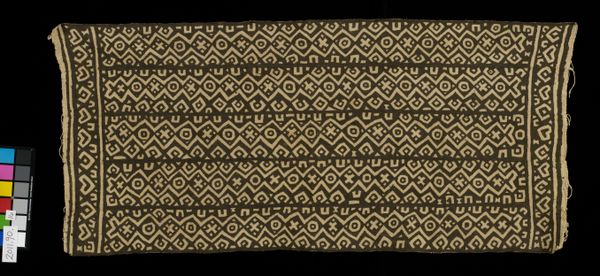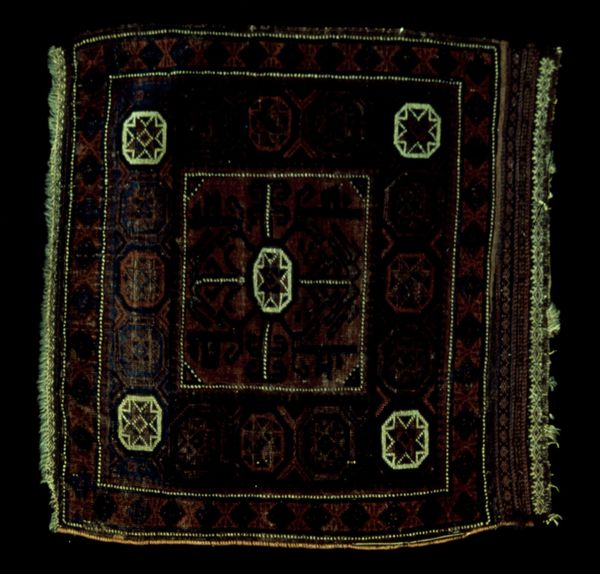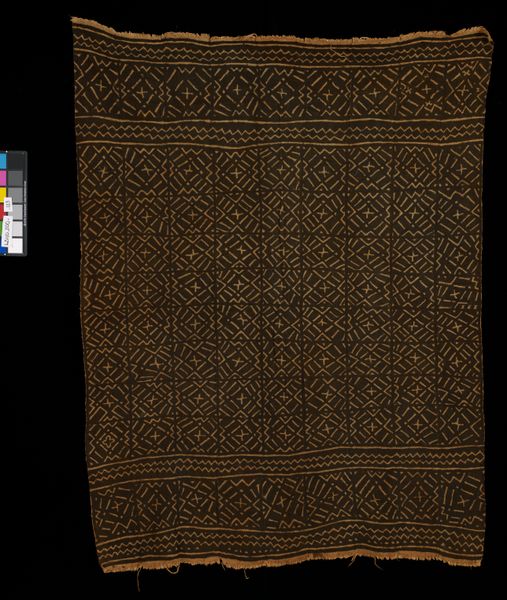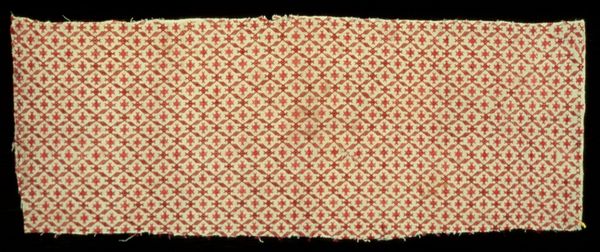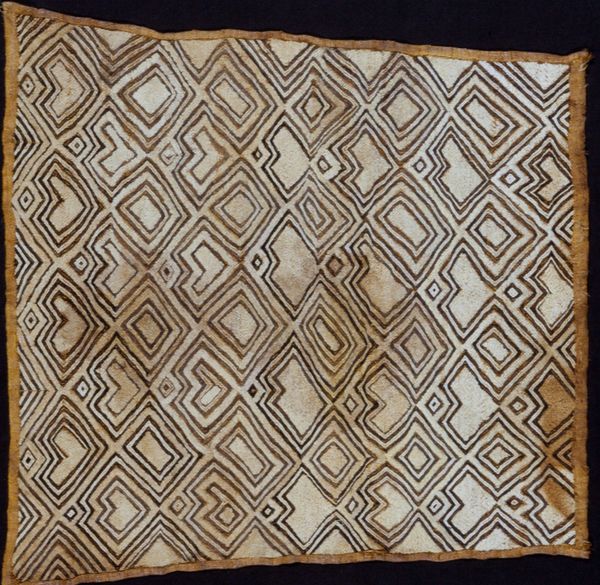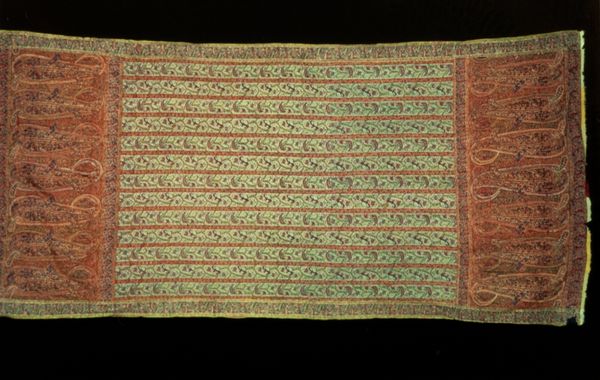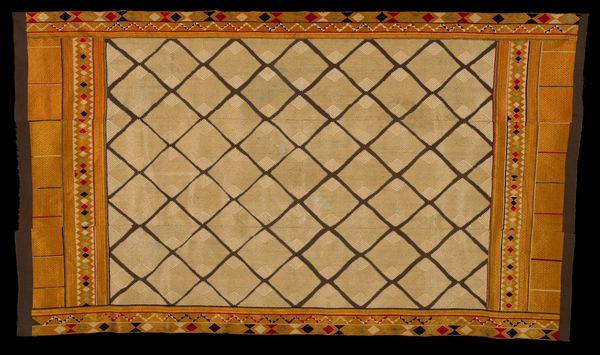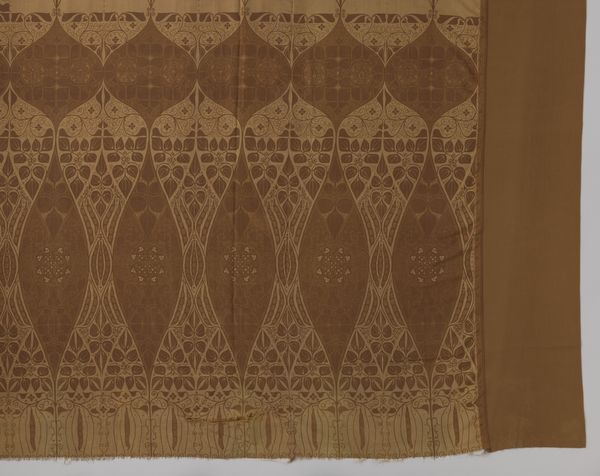
weaving, textile
#
weaving
#
textile
#
geometric pattern
#
geometric
#
repetition of pattern
Dimensions: 50 1/2 x 29in. (128.3 x 73.7cm)
Copyright: Public Domain
Editor: Here we have "Skirt for a Married Woman," made around the 20th century. It's a cotton textile piece and it feels...restrained, almost austere, with all its geometric patterns. What do you see in this piece? Curator: The geometry isn’t arbitrary. Consider the symbols employed here. We see cross shapes nestled within diamonds and rows of chevrons. These likely carried very specific meanings within the cultural context, reflecting societal values around marriage and womanhood. The symbols become a cultural vocabulary, repeated to emphasize these values across generations. Editor: So, it’s not *just* a skirt, it’s a carrier of cultural memory? Curator: Precisely. Each motif likely encoded stories, beliefs, and status. Can you imagine what the act of weaving such patterns might have represented to the women involved? What emotions are stitched into each diamond? Editor: That makes me think about the women who made it and wore it. The textile is an embodiment of communal knowledge, isn’t it? Curator: Indeed. It also subtly suggests the ongoing evolution and adaptation of cultural values, as these patterns might morph and reinterpret older beliefs in light of the present. These repeated motifs—they resonate like echoes of the past. They teach us how the fabric of society is intricately interwoven, wouldn't you agree? Editor: I definitely agree! I never thought of geometric patterns having so much symbolic meaning before! Thank you! Curator: My pleasure. It is fascinating how a simple textile can unlock complex ideas about identity and tradition.
Comments
No comments
Be the first to comment and join the conversation on the ultimate creative platform.

